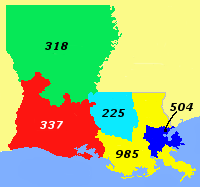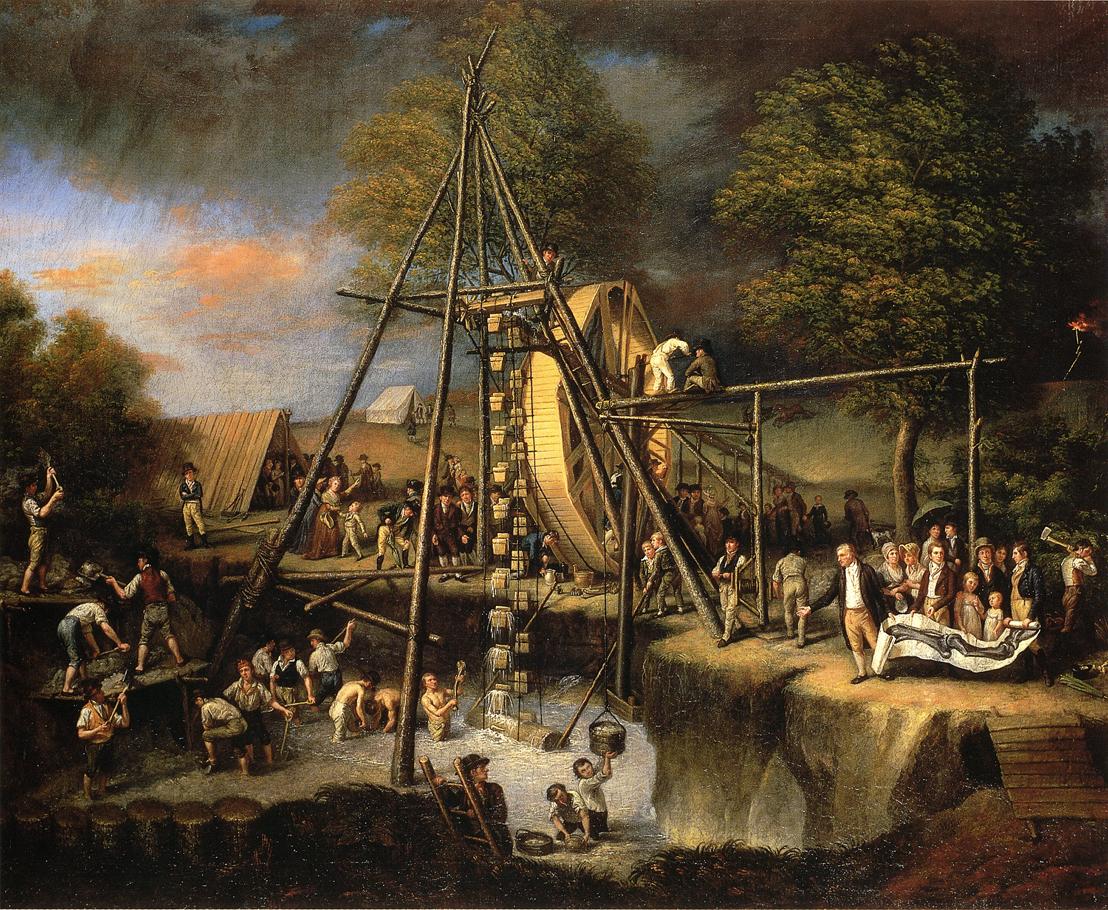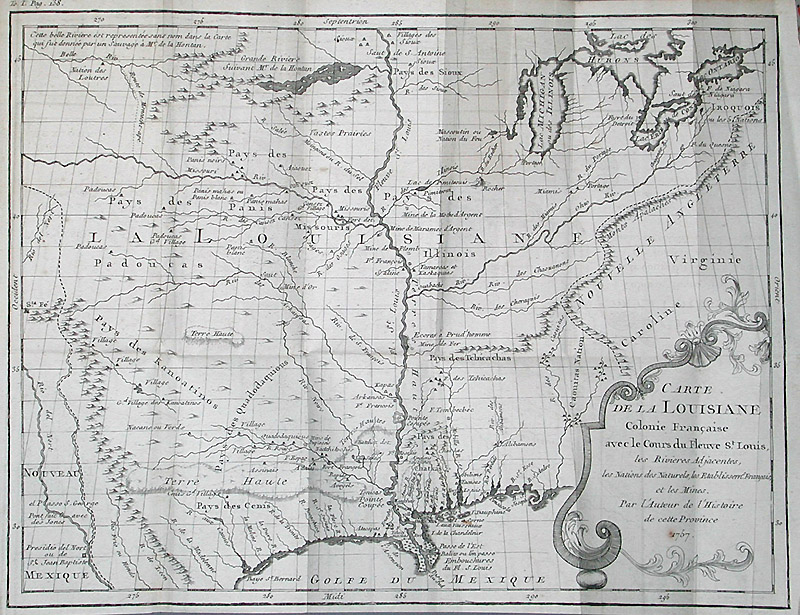|
Carencro
Carencro (; historically french: St.-Pierre) is a city in Lafayette Parish, Louisiana, United States. It is a suburb of the nearby city of Lafayette. The population was 7,526 at the 2010 census, up from 6,120 in 2000; at the 2020 census, its population was 9,272. The name of the city is derived from the Cajun French word for buzzard; the spot where the community was settled was one where large flocks of American black vultures roosted in the bald cypress trees. The name means "carrion crow." Carencro is part of the Lafayette metropolitan area. Etymology Many senior Carencro natives attest that the town's name originates from before the American Civil War. According to this local legend, Native Americans told Vermilionville settlers that in old times a large number of "carrion crows" (vultures, called ''carencro'' in French) had settled around the Vermilion River between Lafayette and Opelousas, Louisiana to feast on a fish die-off. There is a related theory, consistent w ... [...More Info...] [...Related Items...] OR: [Wikipedia] [Google] [Baidu] |
Lafayette Parish, Louisiana
Lafayette Parish (french: Paroisse de Lafayette) is a parish located in the U.S. state of Louisiana. According to the 2020 U.S. census, the parish had a population of 241,753, up from 221,578 at the 2010 United States census. The parish seat is the city of Lafayette. The parish was founded in 1823. Since 1992, Lafayette City and Lafayette Parish have operated as a consolidated government. Etymology The city and parish of Lafayette were named in honor of the Marquis de Lafayette, the French general who took part in the Continental Army in the American Revolutionary War and financially aided it. Geography Lafayette Parish is a part of the region of Acadiana in southern Louisiana, along the Gulf Coast. According to the U.S. Census Bureau, the parish has a total area of , of which is land and (0.2%) is water. It is the fifth-smallest parish in Louisiana by land area and third-smallest by total area. Major highways * Interstate 10 * Interstate 49 * U.S. Highway 90 * ... [...More Info...] [...Related Items...] OR: [Wikipedia] [Google] [Baidu] |
Lafayette Metropolitan Area, Louisiana
Lafayette, Vermilionville, or the Lafayette metropolitan statistical area per the U.S. Office of Management and Budget, is the third largest metropolitan statistical area in the U.S. state of Louisiana. Located in the south central Acadiana region, it covers five parishes. At the 2020 U.S. census, 478,384 people lived in the metropolitan area, making it the 116th most populous in the United States and one of Louisiana's fastest growing metropolises; in 2010, its population was 273,738 and it outpaced the Shreveport–Bossier City metropolitan area in 2015. The approximately metropolitan area centers on Lafayette Parish, which contains the city of Lafayette—the largest economic and cultural center of Acadiana—with a consolidated city-parish population of 244,390 in 2019; the city proper's population was 121,374 in 2020. Part of the larger Lafayette-Opelousas-Morgan City combined statistical area, it borders the Lake Charles metropolitan area to the west. As of 2020, ... [...More Info...] [...Related Items...] OR: [Wikipedia] [Google] [Baidu] |
Lafayette, Louisiana
Lafayette (, ) is a city in the U.S. state of Louisiana, and the most populous city and parish seat of Lafayette Parish, located along the Vermilion River. It is Louisiana's fourth largest incorporated municipality by population and the 234th-most populous in the United States, with a 2020 census population of 121,374; the consolidated city-parish's population was 241,753 in 2020. The Lafayette metropolitan area was Louisiana's third largest metropolitan statistical area with a population of 478,384 at the 2020 census. The Acadiana region containing Lafayette is the largest population and economic corridor between Houston, Texas and New Orleans. Originally established as Vermilionville in the 1820s and incorporated in 1836, Lafayette developed as an agricultural community until the introduction of retail and entertainment centers, and the discovery of oil in the area in the 1940s. Since the discovery of oil, the city and parish have had the highest number of workers in th ... [...More Info...] [...Related Items...] OR: [Wikipedia] [Google] [Baidu] |
Area Code 337
In the North American Numbering Plan, telephone area code 337 covers southwestern Louisiana. It was created in 1999. Until 1999/2000, this area was the southern half of area code 318, which had covered most of Louisiana west of the Mississippi River since 1957. Prior to October 2021, area code 337 had telephone numbers assigned for the central office code 988. In 2020, ''988'' was designated nationwide as a dialing code for the National Suicide Prevention Lifeline, which created a conflict for exchanges that permit seven-digit dialing. This area code was therefore scheduled to transition to ten-digit dialing by October 24, 2021. Cities in the 337 area code * Abbeville, Louisiana * Arnaudville, Louisiana * Baldwin, Louisiana * Basile, Louisiana * Breaux Bridge, Louisiana * Broussard, Louisiana * Cade, Louisiana * Cameron, Louisiana * Carencro, Louisiana * Carlyss, Louisiana * Cecilia, Louisiana * Centerville, Louisiana * Charenton, Louisiana * Church Point, Louisiana * ... [...More Info...] [...Related Items...] OR: [Wikipedia] [Google] [Baidu] |
Opelousas
:''Opelousas is also a common name of the flathead catfish.'' Opelousas (french: Les Opélousas; Spanish: ''Los Opeluzás'') is a small city and the parish seat of St. Landry Parish, Louisiana, United States. Interstate 49 and U.S. Route 190 were constructed with a junction here. According to the 2020 census, Opelousas has a population of 15,786, and is currently declining at a rate of -1.16% annually. Its population has decreased by -6.53% since the most recent census, which recorded a population of 16,634 in 2010. Opelousas is the principal city for the Opelousas-Eunice Micropolitan Statistical Area, which had an estimated population of 80,808 in 2020. Opelousas is also the fourth largest city in the Lafayette- Acadiana Combined Statistical Area, which has a population of 537,947. Historically an area of settlement by French and Spanish Creoles, Creoles of color, and Acadians, Opelousas is the center of zydeco music. It celebrates its heritage at the Creoles of Color ... [...More Info...] [...Related Items...] OR: [Wikipedia] [Google] [Baidu] |
France
France (), officially the French Republic ( ), is a country primarily located in Western Europe. It also comprises of overseas regions and territories in the Americas and the Atlantic, Pacific and Indian Oceans. Its metropolitan area extends from the Rhine to the Atlantic Ocean and from the Mediterranean Sea to the English Channel and the North Sea; overseas territories include French Guiana in South America, Saint Pierre and Miquelon in the North Atlantic, the French West Indies, and many islands in Oceania and the Indian Ocean. Due to its several coastal territories, France has the largest exclusive economic zone in the world. France borders Belgium, Luxembourg, Germany, Switzerland, Monaco, Italy, Andorra, and Spain in continental Europe, as well as the Netherlands, Suriname, and Brazil in the Americas via its overseas territories in French Guiana and Saint Martin. Its eighteen integral regions (five of which are overseas) span a combined area of ... [...More Info...] [...Related Items...] OR: [Wikipedia] [Google] [Baidu] |
Mastodon
A mastodon ( 'breast' + 'tooth') is any proboscidean belonging to the extinct genus ''Mammut'' (family Mammutidae). Mastodons inhabited North and Central America during the late Miocene or late Pliocene up to their extinction at the end of the Pleistocene 10,000 to 11,000 years ago. They lived in herds and were predominantly forest-dwelling animals. They generally had a browsing diet, distinct from that of the contemporary Columbian mammoth, which tended towards grazing. ''M. americanum'', the American mastodon, and ''M. pacificus'', the Pacific mastodon, are the youngest and best-known species of the genus. Mastodons disappeared from North America as part of a mass extinction of most of the Pleistocene megafauna, widely believed to have been caused by a combination of climate changes at the end of the Pleistocene and overexploitation by Paleo-Indians. History A Dutch tenant farmer found the first recorded remnant of ''Mammut'', a tooth some in weight, in the villag ... [...More Info...] [...Related Items...] OR: [Wikipedia] [Google] [Baidu] |
Spaniards
Spaniards, or Spanish people, are a Romance ethnic group native to Spain. Within Spain, there are a number of national and regional ethnic identities that reflect the country's complex history, including a number of different languages, both indigenous and local linguistic descendants of the Roman-imposed Latin language, of which Spanish is the largest and the only one that is official throughout the whole country. Commonly spoken regional languages include, most notably, the sole surviving indigenous language of Iberia, Basque, as well as other Latin-descended Romance languages like Spanish itself, Catalan and Galician. Many populations outside Spain have ancestors who emigrated from Spain and share elements of a Hispanic culture. The most notable of these comprise Hispanic America in the Western Hemisphere. The Roman Republic conquered Iberia during the 2nd and 1st centuries BC. Hispania, the name given to Iberia by the Romans as a province of their Empire, became highly accu ... [...More Info...] [...Related Items...] OR: [Wikipedia] [Google] [Baidu] |
French Language
French ( or ) is a Romance language of the Indo-European family. It descended from the Vulgar Latin of the Roman Empire, as did all Romance languages. French evolved from Gallo-Romance, the Latin spoken in Gaul, and more specifically in Northern Gaul. Its closest relatives are the other langues d'oïl—languages historically spoken in northern France and in southern Belgium, which French (Francien) largely supplanted. French was also influenced by native Celtic languages of Northern Roman Gaul like Gallia Belgica and by the ( Germanic) Frankish language of the post-Roman Frankish invaders. Today, owing to France's past overseas expansion, there are numerous French-based creole languages, most notably Haitian Creole. A French-speaking person or nation may be referred to as Francophone in both English and French. French is an official language in 29 countries across multiple continents, most of which are members of the '' Organisation internationale de la Francopho ... [...More Info...] [...Related Items...] OR: [Wikipedia] [Google] [Baidu] |
Spain
, image_flag = Bandera de España.svg , image_coat = Escudo de España (mazonado).svg , national_motto = '' Plus ultra'' ( Latin)(English: "Further Beyond") , national_anthem = (English: "Royal March") , image_map = , map_caption = , image_map2 = , capital = Madrid , coordinates = , largest_city = Madrid , languages_type = Official language , languages = Spanish , ethnic_groups = , ethnic_groups_year = , ethnic_groups_ref = , religion = , religion_ref = , religion_year = 2020 , demonym = , government_type = Unitary parliamentary constitutional monarchy , leader_title1 = Monarch , leader_name1 = Felipe VI , leader_title2 = Prime Minister , leader_name2 = Pedro Sánchez , legislature = ... [...More Info...] [...Related Items...] OR: [Wikipedia] [Google] [Baidu] |
Antoine-Simon Le Page Du Pratz
Antoine-Simon Le Page du Pratz (1695?–1775)John C. Van Horne, "Memoir of a French Visitor: du Pratz, History of Louisiana" Discovering Lewis & Clark was a French ethnographer, historian, and naturalist who is best known for his ''Histoire de la Louisiane''. It was first published in twelve installments from 1751 to 1753 in the ''Journal Economique'', then completely in three volumes in Paris in 1758. After their victory in the Seven Years' War, the British published part of it ... [...More Info...] [...Related Items...] OR: [Wikipedia] [Google] [Baidu] |
.jpg)


